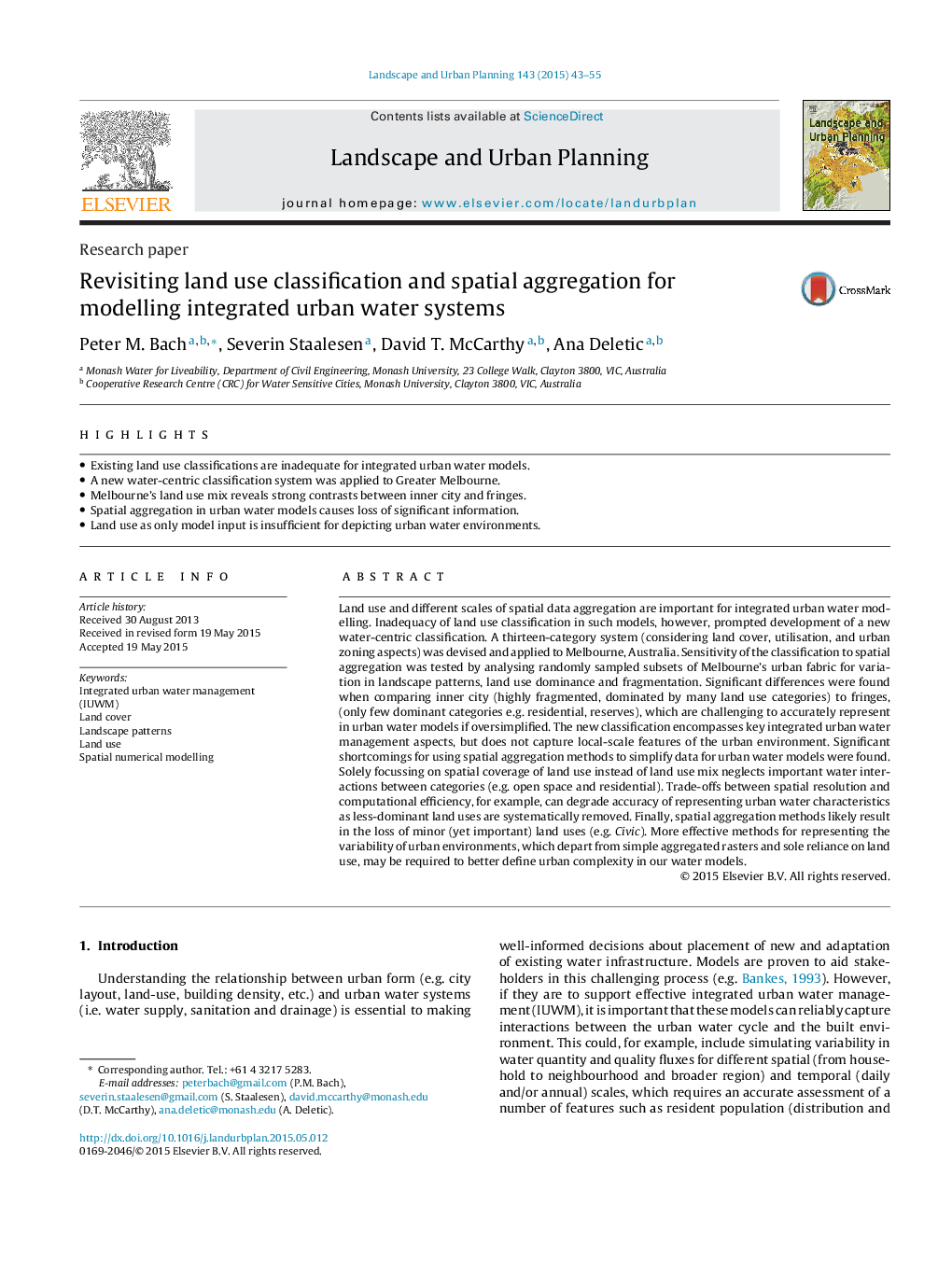| Article ID | Journal | Published Year | Pages | File Type |
|---|---|---|---|---|
| 7460964 | Landscape and Urban Planning | 2015 | 13 Pages |
Abstract
Land use and different scales of spatial data aggregation are important for integrated urban water modelling. Inadequacy of land use classification in such models, however, prompted development of a new water-centric classification. A thirteen-category system (considering land cover, utilisation, and urban zoning aspects) was devised and applied to Melbourne, Australia. Sensitivity of the classification to spatial aggregation was tested by analysing randomly sampled subsets of Melbourne's urban fabric for variation in landscape patterns, land use dominance and fragmentation. Significant differences were found when comparing inner city (highly fragmented, dominated by many land use categories) to fringes, (only few dominant categories e.g. residential, reserves), which are challenging to accurately represent in urban water models if oversimplified. The new classification encompasses key integrated urban water management aspects, but does not capture local-scale features of the urban environment. Significant shortcomings for using spatial aggregation methods to simplify data for urban water models were found. Solely focussing on spatial coverage of land use instead of land use mix neglects important water interactions between categories (e.g. open space and residential). Trade-offs between spatial resolution and computational efficiency, for example, can degrade accuracy of representing urban water characteristics as less-dominant land uses are systematically removed. Finally, spatial aggregation methods likely result in the loss of minor (yet important) land uses (e.g. Civic). More effective methods for representing the variability of urban environments, which depart from simple aggregated rasters and sole reliance on land use, may be required to better define urban complexity in our water models.
Keywords
Related Topics
Life Sciences
Agricultural and Biological Sciences
Ecology, Evolution, Behavior and Systematics
Authors
Peter M. Bach, Severin Staalesen, David T. McCarthy, Ana Deletic,
